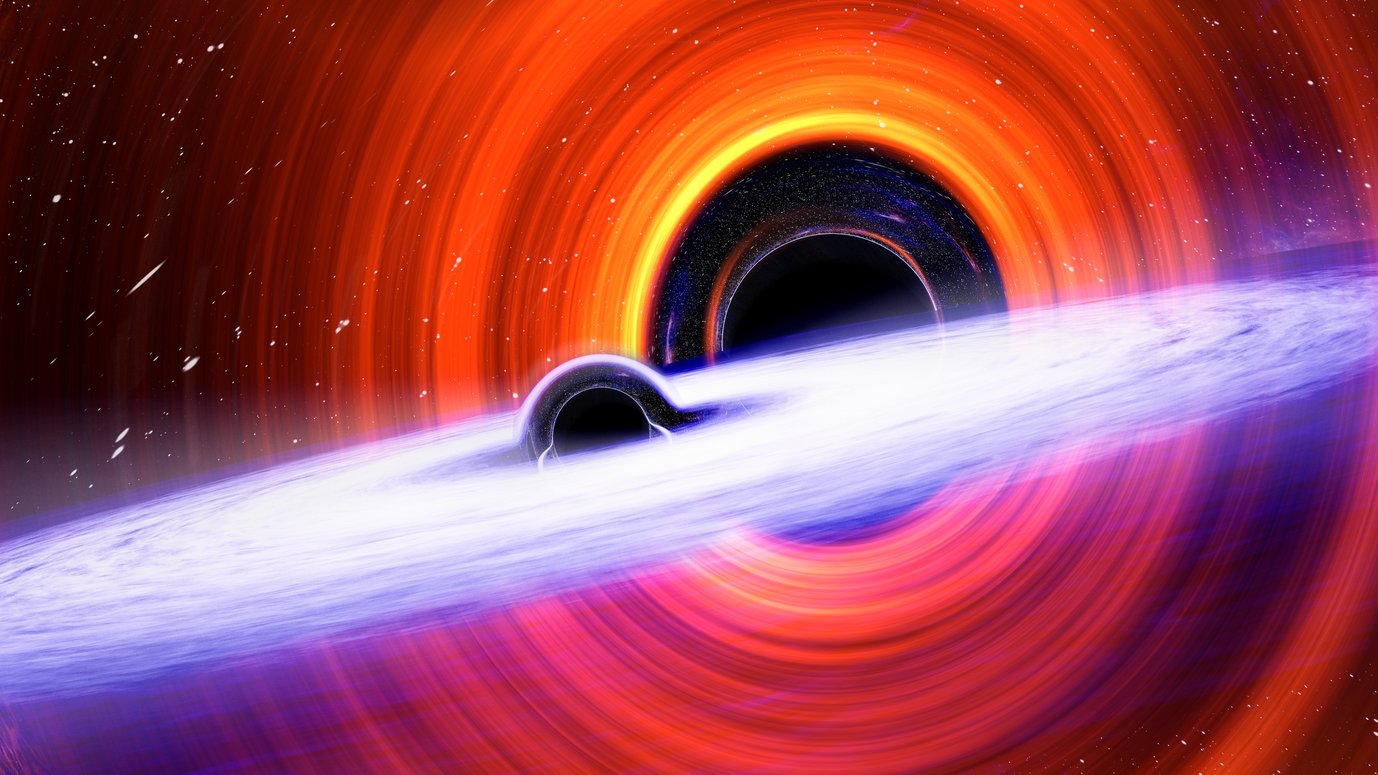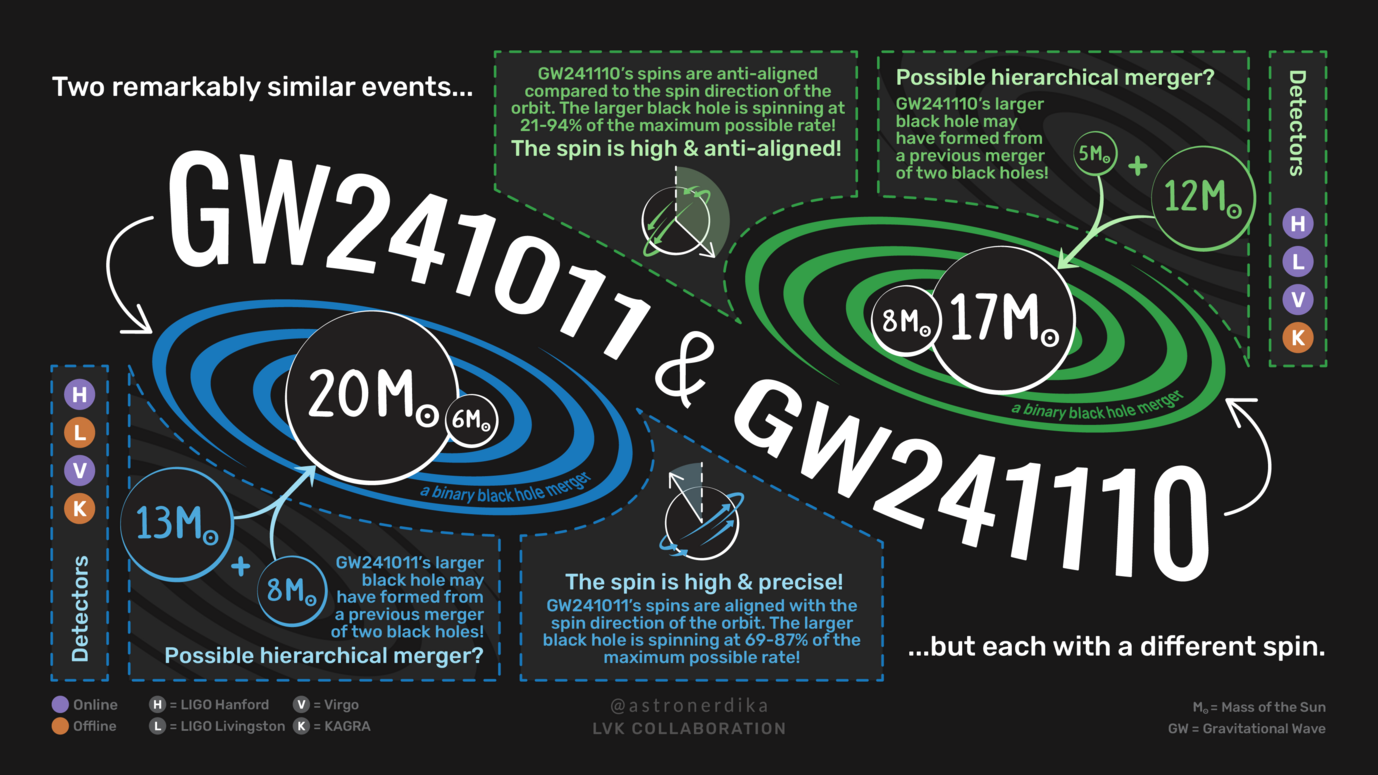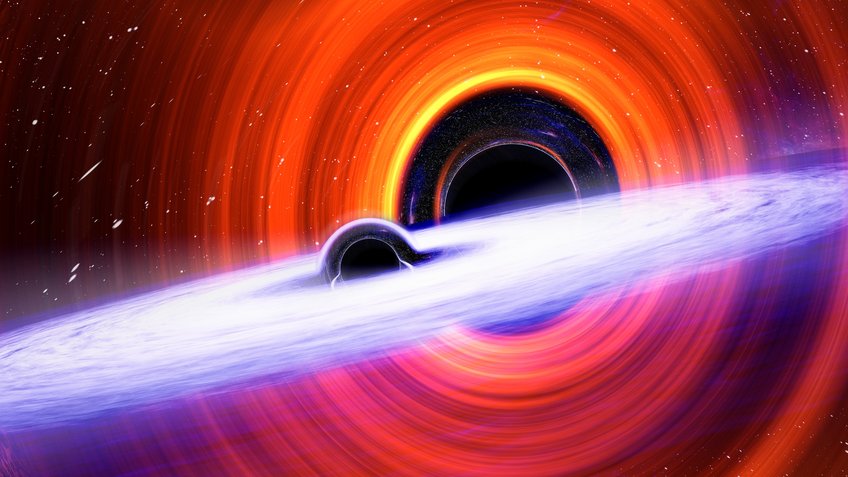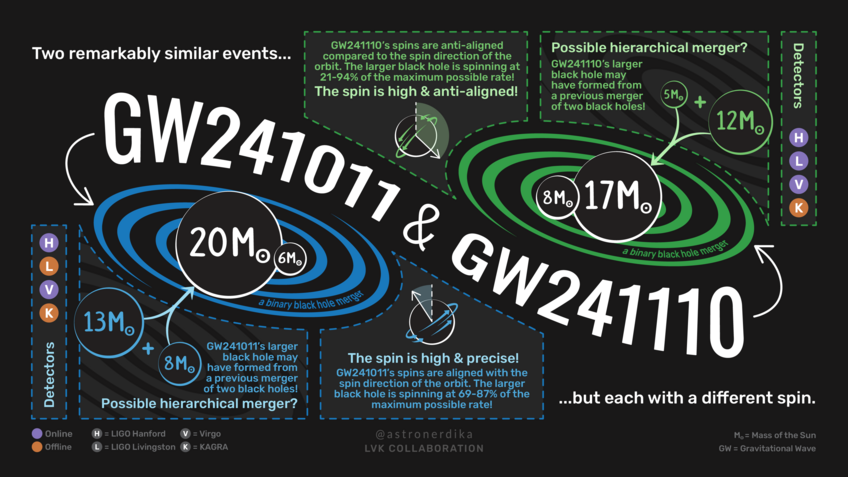LIGO-Virgo-KAGRA observe unlike twin signals
Latest gravitational-wave discoveries from fourth observing run provide new insights into black hole formation as well as particle physics

To the point:
- Unusual signals: Two exceptional gravitational-wave events from pairs of coalescing black holes stand out among the many other signal candidates observed by the LIGO-Virgo-KAGRA collaboration in fall 2024. While the two events, published in The Astrophysical Journal Letters today, have many similarities, they also exhibit notable differences.
- Origin story: The unique blend of signal characteristics allowed the international research team to decipher a possible origin story of these unlike twins from earlier black hole coalescences.
- Useful gravitational waves: Additionally, the signals enable rigorous tests of Einstein’s theory of relativity and a search for new, yet unknown elementary particles.
Unusual signals
Many binary black holes once were binary star systems. There, two stars, each more massive than our Sun, orbited each other, one after the other exploded as a supernova, and collapsed into black holes. This origin story would usually produce slowly rotating black holes with their equators aligned with the binary system’s orbital plane.
“These two new signals come from coalescing binary black holes unlike the ones we normally expect to find and the ones we’ve observed so far,” says Alessandra Buonanno, director at the Max Planck Institute for Gravitational Physics (Albert Einstein Institute; AEI) in Potsdam. “Both contain black holes that spin extremely fast around unusually oriented axes, suggesting a new black hole population.”
Since both pairs consist of two unequally massive black holes, the researchers could determine how fast each heavier black hole was spinning and in which direction its rotation axis was pointing. These new results were achieved using advanced waveform models, including three developed at AEI. These are mathematical recipes to calculate the gravitational waves emitted from a binary. The advanced models assume circular orbits, but can handle generic orientations of the black holes’ rotation axes.
| GW241011 | GW241110 | |
|---|---|---|
| Mass of the larger black hole (in solar masses) | 20 | 17 |
| Mass of the smaller black hole (in solar masses) | 6 | 8 |
| Distance (in light-years) | 700 million | 2.4 billion |
| Detectors taking data | LIGO Hanford, Virgo | LIGO Hanford, LIGO Livingston, Virgo |
| Spin of the larger black hole (relative to maximum possible spin) | 69% to 87% | 21% to 94% |
| Inclination of the equator of the heavier black hole with respect to the binary’s orbital plane | 20° to 40° (similar to Earth and Mars in our solar system) | 90° to 180° (similar to Uranus and Venus in our solar system) |
Observing a nearby black hole coalescence and its unlike twin
The first of the twin signals, GW241011, was observed on 11 October 2024 by the LIGO detector in Hanford and the Virgo detector. The LIGO Livingston detector was undergoing temporary maintenance and not taking scientific measurement data at the time.
The binary black hole coalescence that caused the gravitational-wave signal occurred at a relatively close distance. At just about 700 million light-years away, it is likely the closest such event ever observed. Because it happened nearby, it was detected very clearly. Only two other signals observed to date are “louder”: the recently published GW230814 and GW250114.
The clearly observed gravitational waves encode information about the individual black holes. LVK data analysis revealed that the larger black hole weighs about 20 times as much as our Sun, while the smaller black hole weighs about 6 times as much as the Sun. This unequal mass distribution is what makes the pair special, as most binaries comprise nearly equal-mass black holes.
The second event, GW241110, was detected by both LIGO instruments and Virgo on 10 November 2024, almost exactly one month after the first event. It originated from a black hole coalescence three times farther away than the October signal. Coming from a distance of about 2.4 billion light-years, the signal was not quite as clear. However, its source is a similar pair of black holes with unequal masses of 17 and 8 times that of the Sun, respectively.
The unlike twins
“At first sight, these two pairs of black holes almost look like two peas in a pod. But a closer look reveals some striking differences, for example in how they spin,” says Frank Ohme, leader of an independent Max Planck research group at the AEI in Hannover.
In the pair of black holes that emitted GW241011, the LVK team found that the heavier black hole was one of fastest-rotating black holes observed to date, spinning at least at nearly 70% of the maximum possible value. What’s more, it spun around an axis tilted 20 to 40 degrees away from the axis around which the two black holes orbit.
“In other words, the equator of the heavier black hole in the binary system that produced GW241011 did not lie in the same plane as the orbit of the two black holes,” says Karsten Danzmann, director at the AEI in Hannover. “This is similar to the tilt of Earth’s or Mars’ rotational axis as they orbit the Sun, but somewhat unexpected for a black hole.”
The heavier black hole in the binary system that caused GW241110 is, once again, quite different. Its spin axis was tilted at least 90 degrees, and possibly up to 180 degrees, away from the axis around which the two black holes orbited. This means its spin axis lay in the binary system’s orbital plane, or even pointed downward. This is similar to the rotation axes of the planets Uranus and Venus, respectively, in our solar system.

How did the unusual binaries form?
If the binary had formed from a binary star system, the black holes should slowly spinning and their equators should be aligned with the binary’s orbital plane. Although there are several known mechanisms that could tilt the rotation axes of black holes right before or after they form, all of them fail to explain why these black holes spin so rapidly.
A natural explanation for both the rapid rotation and the tilted rotation axes of the heavier black holes is that they are the result of an earlier coalescence of less massive black holes. These second-generation black holes are expected to rotate more rapidly than their first-generation counterparts. Additionally, since they were not formed in the same binary star system, their rotation axes can point in any direction. Finally, second-generation black holes should, of course, be heavier. The more massive black holes in the coalescences observed as GW241011 and GW241110 fulfill all three criteria and may have formed this way. These earlier collisions likely took place in crowded stellar environments, such as dense star clusters. There, the second-generation black holes could well encounter another black hole to orbit and coalesce with later in their existence, causing the gravitational-wave signals observed now.
An additional clue about the binary’s origin story can come from the shape of its orbit. “Black hole pairs that found each other later in their existence can have slightly more elliptical orbits than those formed from the same binary star,” explains Lorenzo Pompili, a former PhD student at the AEI in Potsdam, who analyzed the signals with the elliptic waveform model. “We’ve looked closely for, but did not find any sign of elliptical orbits.”
Researchers at the AEI in Potsdam have developed an accurate and efficient waveform model for binaries with elliptical orbits. “We have now used our new model to analyze GW241011 and GW241110,” says Aldo Javier Gamboa Castillo, a PhD student at AEI Potsdam, who developed the elliptic waveform model. “Having such waveform models is crucial because neglecting the shape of a binary orbit can result in systematic errors, and including it can help in identifying the binary origin.”
Probing the nature of black holes
Because GW241011 was detected so clearly, it can be compared to predictions from Einstein’s theory of general relativity and Roy Kerr’s solution for rotating black holes. The black hole’s rapid rotation slightly deforms it, leaving a characteristic fingerprint in the gravitational waves it emits. By analyzing GW241011, the LVK team found excellent agreement with Kerr’s solution and verified Einstein’s prediction with unprecedented accuracy. “GW241011 is the first gravitational-wave signal in which we’ve been able to confirm that black holes deform when they rotate rapidly,” says Elise Sänger, a PhD student at the AEI in Potsdam, who carried out the test of the Kerr solution. “We’ve observed the deformation of the heavier black hole due to its rotation with superb clarity and used it to carry out rigorous tests of the nature of black holes.”
Because the masses of the individual black holes differ significantly, the gravitational-wave signal contains the “hum” of higher harmonics – similar to the overtones of musical instruments, seen only for the third time ever in GW241011. One of these harmonics was observed with superb clarity and confirms a prediction from Einstein’s theory of general relativity.
Searching for unknown elementary particles
Rapidly rotating black holes like the ones observed now have yet another application – in particle physics: Scientists can use them to test whether certain yet unknown light-weight elementary particles exist and how massive they are. These particles, called ultralight bosons, are predicted by some theories that go beyond the Standard Model of particle physics, which describes and classifies all known elementary particles. If ultralight bosons exist, they can extract rotational energy from black holes. How much energy is extracted and how much the rotation of the black holes slows down over time, depends on the mass of these particles, which is still unknown. The observation that the massive black hole in the binary system that emitted GW241011 continues to rotate rapidly even millions or billions of years after it formed rule out a wide range of ultralight boson masses.
It is currently unclear whether the unlike twins GW241011 and GW241110 are common members of our Universe’s black hole population or if they are the first specimens of a new subgroup of black holes. Only the first part of the LVK’s fourth joint observing run has been fully analyzed and published thus far. There may be more surprises to come.
The LIGO-Virgo-KAGRA Collaboration
LIGO is funded by the NSF, and operated by Caltech and MIT, which conceived and built the project. Financial support for the Advanced LIGO project was led by NSF with Germany (Max Planck Society), the U.K. (Science and Technology Facilities Council) and Australia (Australian Research Council) making significant commitments and contributions to the project. More than 1,600 scientists from around the world participate in the effort through the LIGO Scientific Collaboration, which includes the GEO Collaboration. Additional member institutions are listed at https://my.ligo.org/census.php.
The Virgo Collaboration is currently composed of approximately 880 members from 152 institutions in 17 different (mainly European) countries. The European Gravitational Observatory (EGO) hosts the Virgo detector near Pisa in Italy, and is funded by Centre National de la Recherche Scientifique (CNRS) in France, the Istituto Nazionale di Fisica Nucleare (INFN) in Italy, and the National Institute for Subatomic Physics (Nikhef) in the Netherlands. More information is available on the Virgo website at https://www.virgo-gw.eu.
KAGRA is the laser interferometer with a 3 km arm-length in Kamioka, Gifu, Japan. The host institute is Institute for Cosmic Ray Research (ICRR), the University of Tokyo, and the project is co-hosted by National Astronomical Observatory of Japan (NAOJ) and High Energy Accelerator Research Organization (KEK). KAGRA collaboration is composed of over 400 members from 128 institutes in 17 countries/regions. KAGRA’s information for general audiences is available at https://gwcenter.icrr.u-tokyo.ac.jp/en/. Resources for researchers are accessible from http://gwwiki.icrr.u-tokyo.ac.jp/JGWwiki/KAGRA.

